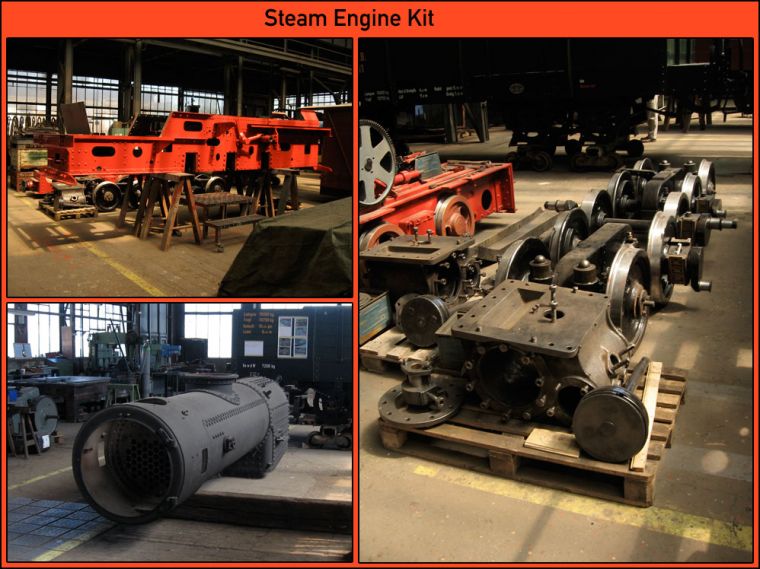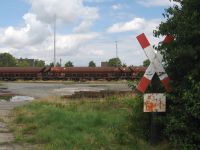Steam Engine Kit

Posted: 13 August 2008

This work is licensed under a Creative Commons Germany license.
Notes
shenanigan87 is doing detail pictures of locomotives, so I thought I’d copy the idea and show some stuff that has been lingering in my iPhoto library for a while. Here, from Blankenburg: What does it take to build your own steam engine?
From top-left clockwise you see the frame, then the wheelsets and cylinders, and finally the boiler. Obviously this isn’t all there is to it, but it’s the most important parts. Also obviously, this is a narrow-gauge engine. It is being reconstructed there, and for this has first been disassembled in all it’s pieces.
There are a couple of interesting things to see here. In the boiler, you can see the holes where the steam and exhaust tubes go through.
What I consider to be more interesting is the frame and the wheels, though. First of all, the middle axle is cylindrical and has no flange. Also, you can see that the entire construction has only three bearings per side for five axles, and the frame has the same amount of openings. This is not a mistake by me, they do belong together. As you can see, the first and last axle are connected to the second and fourth axle through a black box. This contains a gear set, which drives those axles, instead of the usual construction. The first and final axles also have special damper constructions, on which the frame will rest when it’ll be put together again.
The goal for this is to have an E wheel arrangement (or 0-10-0 in american notation, though I like E better), but at the same time remain flexible. Since it’s narrow-gauge and small and for low-speed use, it has to have tiny wheels, so you need a lot of them, but rods don’t allow enough sideways movement of the axles in tight turns. Tight turns are obviously a problem on this route, since it has been built narrow-gauge already. The geared construction allows for a very flexible wheel arrangement at the ends, while the lack of a flange at the middle axle means that this axle won’t restrict lateral movement. Unlike Mallet or Shay locomotives, this requires only a single frame and a single set of cylinders, and less maintenance-intensive mechanics.
Sadly, I don’t know anything about the locomotive that this is supposed to be when assembled. Gauge looks like 750 mm (guessed), but that’s all I can tell you.

 Deutsche Version
Deutsche Version Entire Gallery
Entire Gallery

 Next Picture
Next Picture
 Previous Picture
Previous Picture